Rare Rides Icons: The Toyota Cressida Story (Part I)

Our recent Rare Rides Icons coverage of the main quadrant of mid-Eighties Japanese family sedans ( Camry, Accord, Maxima, 626) brought another sedan to mind. Boxy and conservative, it was an upscale offering at a time when Japanese luxury brands simply did not exist. The sedan in question was popular enough for Nissan to target it directly with their Maxima. Presenting the Toyota Cressida, a comfortable luxury experience.
Through Toyota’s early years in North America, the company experimented with sales of larger models without much success. The “large” Toyopet Crown was imported in the late Fifties, and while Toyota considered it a full-size car, its tidy 168.7-inch length meant it was about 14 inches shorter than even a compact 1960 Chevrolet Corvair. Toyota took a few years off and brought back a Crown once more in 1965. By that time the model had grown size competitive with American compacts, as it added about 14 inches to its length.
But the Crown was always a slow seller on North American shores, and by 1973 Toyota dropped it to focus on the smaller Corona. Toyota had offered the Corona since the mid-Sixties, and it found a customer base in North America: Though it was small, it was more affordable than the Crown. The Corona expanded its reach in 1968 as the Corona Mark II appeared. Slightly larger and with more standard equipment than the standard Corona, North American customers found Corona Mark II an appealing midsize car.
With the divergence in Corona and Mark II, Toyota established separate paths for the two similar models. The Corona would see itself cut of content and continually made a cheaper car, while the Mark II moved further upmarket. By the Mark II’s second generation in 1973, it disassociated itself from the Corona by dropping its name in most markets. However, North America retained the full Corona Mark II name. Mark II grew larger in its second guise and had six-cylinder engines for the first time. Toyota wanted to compete more directly with upmarket Datsun models in North America: Its competitor launched the 610 in 1971, and sold their well-equipped renamed Nissan Bluebird as a “luxury Datsun.”
During the early Seventies oil crisis, cars like the 610 and Mark II were the only large-ish Japanese vehicles on sale in North America. They were suitable for buyers who’d grown tired of their domestic barges and desired better fuel economy but were not willing to buy a subcompact like the Honda Civic. Unlike Toyota’s smaller economy cars, Mark II offered a high level of standard equipment and an inline-six as its standard motivation. The goal was to show the customer they could have an efficient, reliable car without giving up the equipment they desired.
The final Mark IIs (X20) were available in North America for the 1976 model year, as Toyota took a one-year hiatus before it introduced its follow-up. The Mark II proved Toyota could sell a well-equipped larger car in the States, and the company was confident it could add even more content to its Mark II replacement. A new name was introduced for the 1978 model year, emblazoned on an all-new upscale car: Cressida.
In its home market, the Cressida was still called the Mark II, and the X30 version entered production late in 1976 for the 1977 model year. All examples of the third generation Mark II sent to North America were built at Toyota’s plant in Aichi. Secondary production for other markets took place in the Philippines, where the cars were assembled by Delta Motors Corporation. Part of the reason Toyota dropped the Mark II moniker in North America was due to the name’s common association with Lincoln.
As with most Japanese cars, Mark II grew larger in its transition to the Cressida. The wheelbase increased from 101.8 inches to 104.1″. Toyota was aware that luxury cars often had nice long overhangs, so the three-inch increase in wheelbase was accompanied by an 11-inch increase in overall length. The Mark II was 170.3 inches, while a Cressida was 181.7″; much more in line with what an American customer might expect in a family car. Cressida was still about 11 inches shorter than a Chevrolet Malibu, however. Other dimensions increased too, as width went from 64″ to 66.1 inches (five inches shy of the Malibu). Height gained about three inches for better headroom, up to 57.3 inches from 54.3″.
The Cressida sported entirely different looks than the Mark II. the outgoing car had a softer-looking front end with quad headlamps, flanked by a split grille that was filled with black horizontal slats. The front end came to a point, while a side character line headed downward toward the rear. The hood was mostly flat, and without much shape. The overall look was almost of a fastback sedan, with a vinyl roof that was cut clumsily around the chrome-ringed fuel door. The rear end was abrupt and largely vertical, with large lamp clusters. The overall look in any body style was a bit sporty for a luxury car, and most definitely Japanese.
Cressida was much more upright and more formal. The front end wore a mesh grille that was no longer separated, and it dazzled in chromed detailing. Headlamps were circular and ringed in chrome, with inset squared off driving lamps that had their own chrome boxes. Cressida’s hood was sculpted around the grille, and fenders curved around to match the shape of the headlamps. An untrimmed side body line still flowed down toward the rear, but it wasn’t as fast an angle and didn’t continue past the rear door. The bodyside trim was lower down and horizontal like a traditional luxury car. Wheel arches were newly chromed, and sporty-looking wheel covers on the Mark II were replaced by chromed discs on the Cressida.
The Cressida’s rear end was more square and upright and matched the more upright greenhouse. Said greenhouse was no longer covered by clumsy vinyl and featured chrome window trim and chrome B-pillars. Rear lenses became smaller, simpler, and more conservative as the Cressida did a 180 from any notion of sportiness. Its appearance, while more conservative, was also less Japanese. The front end reflected European styling influences, particularly from Jaguar.
Body formats for the new Mark II were carried over from the prior model and consisted of a two-door coupe, and a four-door sedan and wagon. Toyota chose not to import the personal luxury Cressida coupe to North America (that’s what the Celica Supra was for) but did offer in-fashion wood paneling on the wagon. In many markets, a variety of inline-four engines were available, as small as 1.8 liters on base models, and through to 2.0 liters. There were two different inline-six engines from Toyota’s M family, a standard 2.0-liter M, or the 2.6-liter 4M and sibling the 4M-E. The E signified cars with electronic fuel injection, a system sourced from the more expensive Crown. A single diesel arrived for the Mark II in 1979, a 2.2-liter inline-four.
Once again, all Cressidas exported to North America used an inline-six. The 4M was the only available engine at introduction, and in its carbureted format managed 123 horsepower. The 4M-E arrived for 1979 and showed up with less power: 110 horses. Not especially sophisticated, the engine had single overhead cams and two valves per cylinder. Cressida was the first Toyota in North America to have fuel injection. The Cressida’s transmission was most often a four-speed automatic, but there was a five-speed manual available.
As it was the largest Toyota on sale in North America and a luxury model, the Cressida didn’t come cheap. In 1979 it asked $8,279 ($34,079 adj.) before options, at a time when a Corolla was $4,253 ($17,506 adj.). For that money, buyers received a standard automatic transmission, power steering, stereo with cassette, a rear defroster, and air conditioning.
The first Cressida proved to be a short-lived model, an experiment with Euro-influenced brougham styling that saw a reversion back to a very Japanese look in short order. Cressida was available for just three model years in its initial shape before Toyota ushered in its successor. It was time for a larger Cressida with more power and much more technology. More on that next time.
[Images: Toyota]

Interested in lots of cars and their various historical contexts. Started writing articles for TTAC in late 2016, when my first posts were QOTDs. From there I started a few new series like Rare Rides, Buy/Drive/Burn, Abandoned History, and most recently Rare Rides Icons. Operating from a home base in Cincinnati, Ohio, a relative auto journalist dead zone. Many of my articles are prompted by something I'll see on social media that sparks my interest and causes me to research. Finding articles and information from the early days of the internet and beyond that covers the little details lost to time: trim packages, color and wheel choices, interior fabrics. Beyond those, I'm fascinated by automotive industry experiments, both failures and successes. Lately I've taken an interest in AI, and generating "what if" type images for car models long dead. Reincarnating a modern Toyota Paseo, Lincoln Mark IX, or Isuzu Trooper through a text prompt is fun. Fun to post them on Twitter too, and watch people overreact. To that end, the social media I use most is Twitter, @CoreyLewis86. I also contribute pieces for Forbes Wheels and Forbes Home.
More by Corey Lewis
Latest Car Reviews
Read moreLatest Product Reviews
Read moreRecent Comments
- GrumpyOldMan All modern road vehicles have tachometers in RPM X 1000. I've often wondered if that is a nanny-state regulation to prevent drivers from confusing it with the speedometer. If so, the Ford retro gauges would appear to be illegal.
- Theflyersfan Matthew...read my mind. Those old Probe digital gauges were the best 80s digital gauges out there! (Maybe the first C4 Corvettes would match it...and then the strange Subaru XT ones - OK, the 80s had some interesting digital clusters!) I understand the "why simulate real gauges instead of installing real ones?" argument and it makes sense. On the other hand, with the total onslaught of driver's aid and information now, these screens make sense as all of that info isn't crammed into a small digital cluster between the speedo and tach. If only automakers found a way to get over the fallen over Monolith stuck on the dash design motif. Ultra low effort there guys. And I would have loved to have seen a retro-Mustang, especially Fox body, have an engine that could rev out to 8,000 rpms! You'd likely be picking out metal fragments from pretty much everywhere all weekend long.
- Analoggrotto What the hell kind of news is this?
- MaintenanceCosts Also reminiscent of the S197 cluster.I'd rather have some original new designs than retro ones, though.
- Fahrvergnugen That is SO lame. Now if they were willing to split the upmarketing price, different story.



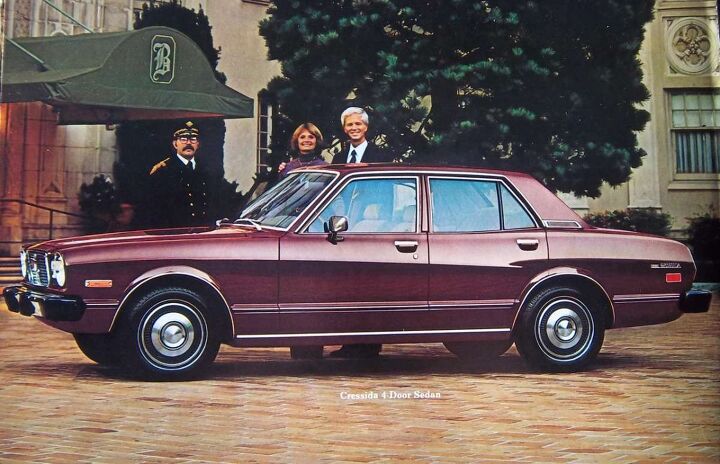























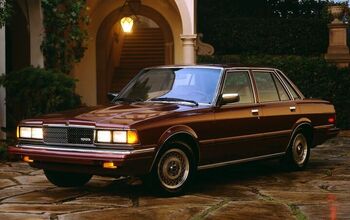
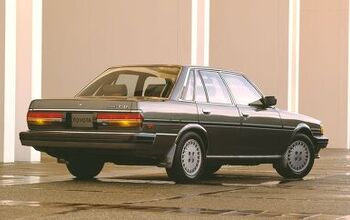
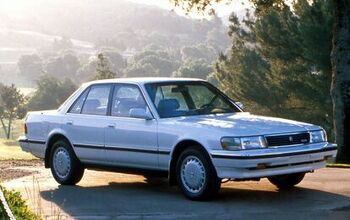
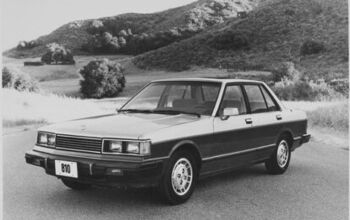
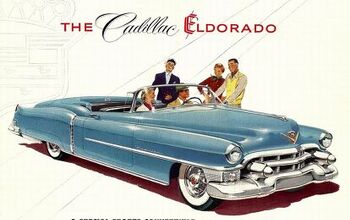






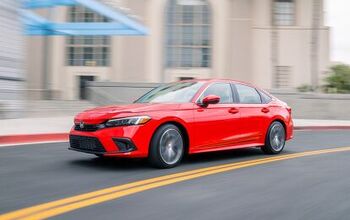



Comments
Join the conversation
I'm also awaiting the next chapter. That one intersected with a bizarre instance of my Dad ending up with a blue early-80s Cressida as a company car after abysmal of-the-era artifacts as a 4-door Cutlass whose Catalytic Converter farted sulfur on any less-than-gentle stop and the white full-sized LTD wagon "with the horn on the turn signal stalk". I'm sure the seeds were planted there for him going full-Lexus in the late 1990s. Its tenure was just THAT much before I was allowed behind the wheel.
"...the lost Lamborghinis will require the company to resume production of the V12 Aventador..." Why? Can't they just issue some refunds and call it a day? Or offer to substitute one of their other products?